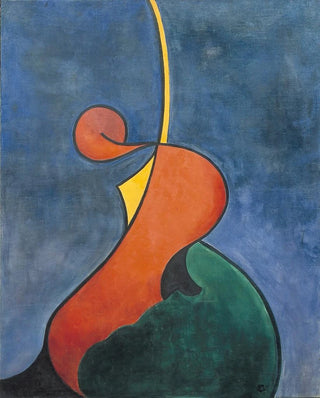Art print | Heroic movement - Theo van Doesburg


View from behind

Frame (optional)
Heroic Movement art print - Theo van Doesburg – Captivating Introduction
In the fascinating universe of modern art, the "Heroic Movement" art print by Theo van Doesburg stands out for its ability to capture the essence of dynamism and innovation. This iconic piece not only reflects the avant-garde vision of the artist but also embodies an era when artistic conventions were challenged. Through its boldness and originality, this work invites viewers to immerse themselves in a world where shapes and colors intertwine to create a striking visual experience. The art print of "Heroic Movement - Theo van Doesburg" allows access to this masterful piece and enables appreciation of its subtleties.
Style and uniqueness of the work
The style of "Heroic Movement" is inseparable from the philosophy of the De Stijl movement, of which Theo van Doesburg was a leading figure. This piece is characterized by a daring use of geometric lines and primary colors, which combine to form a dynamic composition. Rectangular shapes, arranged to suggest movement, evoke a sense of energy and progress. This innovative approach allows the work to transcend simple figurative representations, offering an abstract vision that embodies the spirit of a rapidly changing era. The juxtaposition of vivid colors against neutral backgrounds creates a striking contrast, further enhancing the visual impact of the piece. Every element, every nuance, appears to be carefully thought out to invite contemplation and reflection.
The artist and his influence
Theo van Doesburg, born in 1883 in the Netherlands, is an essential figure in modernism. As a co-founder of the De Stijl movement, he played a decisive role in the evolution of abstract art in the 20th century. His radical approach, which advocated harmony between art and architecture, inspired many artists and architects, including Gerrit Rietveld and Piet Mondrian. Van Doesburg was not content to explore the limits of painting; he also sought to integrate art into daily life by creating works that went beyond the canvas. His influence is still felt today, both in the field of

Matte finish

View from behind

Frame (optional)
Heroic Movement art print - Theo van Doesburg – Captivating Introduction
In the fascinating universe of modern art, the "Heroic Movement" art print by Theo van Doesburg stands out for its ability to capture the essence of dynamism and innovation. This iconic piece not only reflects the avant-garde vision of the artist but also embodies an era when artistic conventions were challenged. Through its boldness and originality, this work invites viewers to immerse themselves in a world where shapes and colors intertwine to create a striking visual experience. The art print of "Heroic Movement - Theo van Doesburg" allows access to this masterful piece and enables appreciation of its subtleties.
Style and uniqueness of the work
The style of "Heroic Movement" is inseparable from the philosophy of the De Stijl movement, of which Theo van Doesburg was a leading figure. This piece is characterized by a daring use of geometric lines and primary colors, which combine to form a dynamic composition. Rectangular shapes, arranged to suggest movement, evoke a sense of energy and progress. This innovative approach allows the work to transcend simple figurative representations, offering an abstract vision that embodies the spirit of a rapidly changing era. The juxtaposition of vivid colors against neutral backgrounds creates a striking contrast, further enhancing the visual impact of the piece. Every element, every nuance, appears to be carefully thought out to invite contemplation and reflection.
The artist and his influence
Theo van Doesburg, born in 1883 in the Netherlands, is an essential figure in modernism. As a co-founder of the De Stijl movement, he played a decisive role in the evolution of abstract art in the 20th century. His radical approach, which advocated harmony between art and architecture, inspired many artists and architects, including Gerrit Rietveld and Piet Mondrian. Van Doesburg was not content to explore the limits of painting; he also sought to integrate art into daily life by creating works that went beyond the canvas. His influence is still felt today, both in the field of






